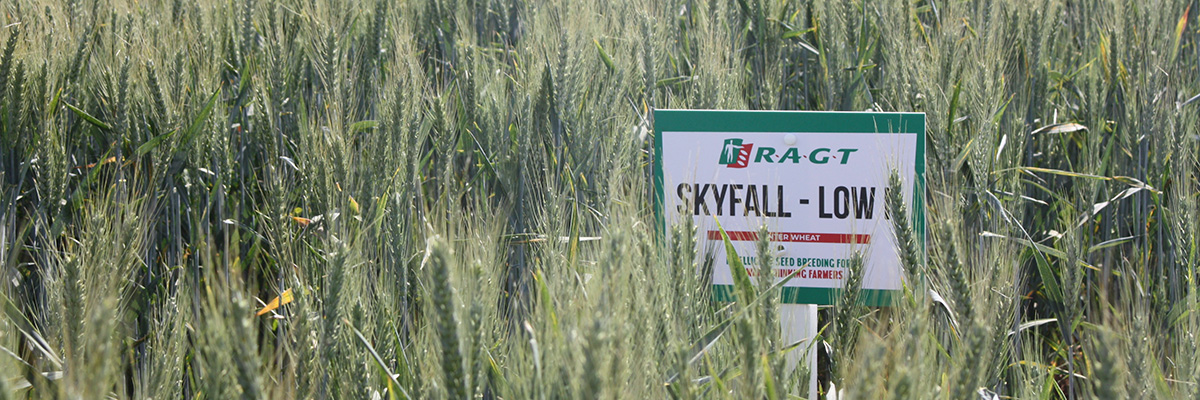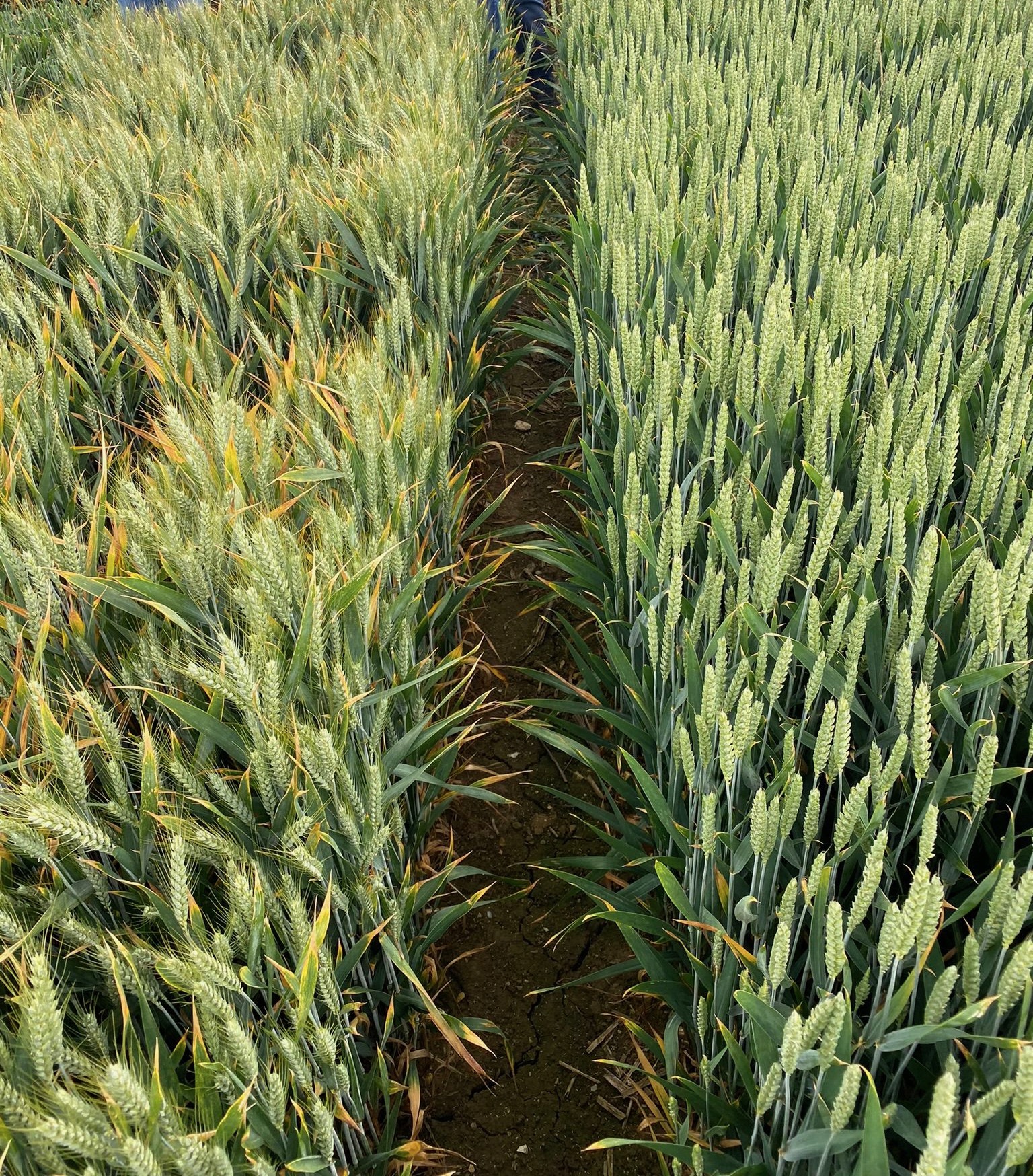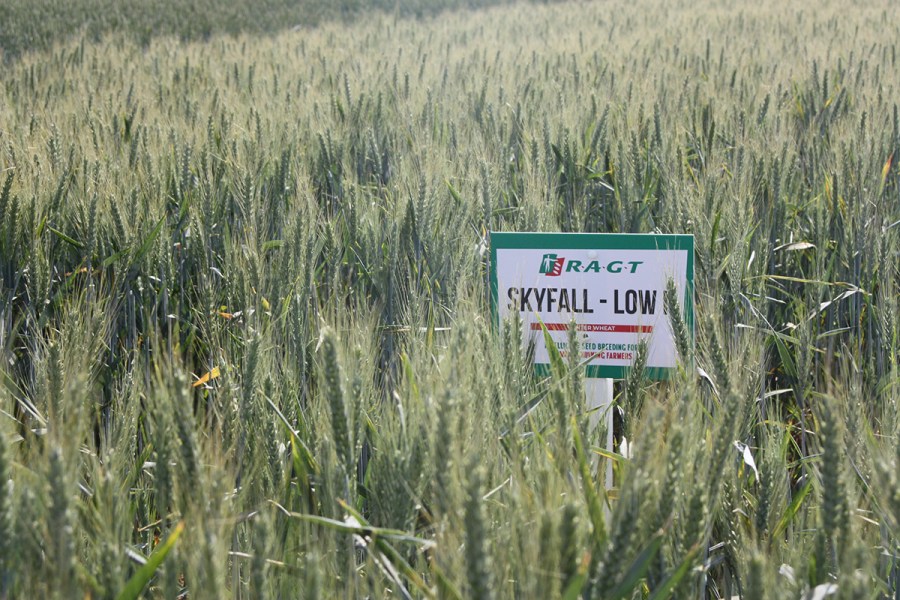
New trials examining how wheat and barley varieties interact with supplementary crops could help farmers maximise profits when adopting greener production techniques. CPM attends an RAGT open day in June to learn more.
So far there appears to be a distinct difference in which cover crop you use, and phacelia looks to be a must.
By Lucy de la Pasture
As the sun burns brightly overhead, the trials established by RAGT Seeds this season look set to increase the base of knowledge about variety interactions with some of the techniques being used on farm to improve soil health.
These include the use of companion crops to manipulate grain nitrogen levels in milling wheat and spring barley to reduce the crops’ environmental footprint and potentially reduce costs. Another study is looking at the relationship between various soil-improving cover crops and RAGT wheat varieties to see if some combinations perform better than others.
Tom Dummett, RAGT’s cereal and oilseed rape product manager, explains the aim of the trials work is to gather data to underpin some variety guidelines for growers, bearing in mind changing support payment criteria and the vision of a zero-carbon future.
“End users will also pay a lot more attention to carbon footprints of farm commodities, so it makes sense to do the work now so we can share any positive findings with growers.”

Tom Dummett says the aim of the trials is to gather data to underpin variety guidelines for growers looking to improve soil health.
Two large blocks of milling wheats have been intercropped with nitrogen-fixing cover crop species to see if the technique might encourage more effective nitrogen uptake by the wheats, replacing some bagged nitrogen and improving protein production efficiency.
The trial features November-sown RGT Illustrious and Skyfall, each under two nitrogen regimes of 280kg/ha and 250kg/ha, grown together with a range of clovers – a micro-clover, which consists of 90% root and 10% leaf; red clover; white clover; red and white clover; and fallow.
The clovers were stitched into the wheat in the spring using a light drill and the aim is to establish a permanent understorey, explains RAGT managing director Lee Bennett. “It’s not unheard of to fix 200kg/ha of N, so it’s going to be interesting to see what we can achieve when we have well-established clover.”
A similar technique is being tested on stands of malting barleys RGT Planet and RGT Asteroid. These have been overlaid by a matrix of catch crops and fallow. The catch crops – vetch, radish plus phacelia, and forage rape plus berseem clover plus vetch provide a nitrogen source, a nitrogen sink and both source and sink respectively.
Each variety plot has been divided, with one receiving a ‘standard’ nitrogen application of 120kg/ha and the other a reduced 100kgN/ha. The companion crops were planted as soon the preceding wheat was cut then sprayed off with glyphosate in January just before the spring barley was drilled.
“We’re looking to see whether the companions retain more soil N or create more, and whether that enables us to produce guidelines to help growers reduce inorganic N use in the barley while still hitting quality and specification,” says Tom.
“One global maltster is very interested in this, and we will roll this work out in support of European colleagues as well. We’ve started conservatively, but it could be that the right catch crops could provide most, if not all of, the nitrogen that malting barley crops require.”

The effect of different cover crops on the performance of a range of winter wheats is being examined in a new multi-year trial to help growers match variety to cover crop, says Lee Bennett.
The effect of different cover crops on the performance of a range of winter wheats is being examined in a new multi-year trial, adds Lee. The initial objective of the cover crop/winter wheat trial is to investigate whether there’s any difference in the way RAGT varieties perform when following a range of typical cover crop species commonly chosen by growers to improve soil health.
Further work will look at other potential benefits stemming from nitrogen capture and reduction in diseases and pests such as take-all and nematodes, he says. “The ultimate aim is to enable growers to match their RAGT wheat varieties to cover crops.”
“There are some very complex mixtures out there that contain multiple species, but what does each constituent do? We started very simply, using three straights plus a couple of mixtures and a fallow, so we can pinpoint what does work and what doesn’t, and how our varieties respond.”
The cover crops were sown on 14 September, followed a month later by 14 RAGT wheat varieties, direct-drilled across the different covers. The catch crops were destroyed in the spring, giving them as long as possible to condition soils and capture nitrogen without interfering with the wheat crops’ development.
Some clear differences in crop biomass have already become apparent, says Tom. “We’re seeing some significant differences in GAIs between varieties drilled into fallow and others drilled into catch crops, although it’s too early to draw any conclusions. But when we look at cover crop performance, phacelia appears to be standing out. We saw a doubling of wheat GAI compared with fallow and a significant increase compared with other cover crop species.
“We don’t know how or why, although phacelia does have a very fibrous root, so it might have enabled the crop to put down roots more quickly, providing better access to nutrients.
“It will be fascinating to piece all the results together at the end of the season, including yield and quality data, to see what we might discover. So far there appears to be a distinct difference in which cover crop you use, and phacelia looks to be a must,” he suggests.
“It’s a bit of a look-see at this stage and we will refine protocols as we go forward in what will be a long-term trial looking at both first and second wheats covering a range of seasons.”
Catch crops used in the trial include nematode-resistant oilseed radish, phacelia, Ethiopian mustard, Biofum summer plus (nematode-resistant oilseed radish plus white, brown and Ethiopian mustard), and RGT Nemaredux (nematode-resistant oilseed radish, phacelia plus trio rocket lettuce).
Insecticide-free wheats
The first winter wheat varieties with resistance to both barley yellow dwarf virus and orange wheat blossom midge are expected to be launched commercially in autumn 2023, offering the prospect of insecticide-free wheat for many growers, says Tom.
RAGT is fast-tracking seed production of two varieties up for full Recommended List consideration in 2023. On-farm multiplication of commercial seed will take place this coming season to help meet anticipated high demand in autumn 2023.

BYDV-resistant wheat plots (on right) showed no symptoms obviously associated with the disease, but conventional varieties were affected.
Both varieties are Group 4 hard types, like RGT Wolverine, which in 2019 became the first commercial wheat in Europe with BYDV resistance. However, the new Group 4s are very different prospects, explains Tom.
“When it comes to yield potential and disease resistance, these new Group 4s are without doubt a big improvement – and they have OWBM resistance,” he adds. “They’re also better suited for early sowing, which is where BYDV-resistant varieties will come into their own.”
Their dual resistance means many crops won’t have to be sprayed with insecticides at all, which is already causing millers users to prick up their ears, he comments.
Fortunately, RAGT has three very promising milling wheats resistant to both pests that are excelling in screening trials, claims Tom. And if they make the grade, they’ll be ready for launch in 2025.
“We have a very large pipeline of varieties mostly with virus resistance and midge resistance. All different backgrounds, all different quality classes, but these milling wheats look particularly exciting.
“Two of the three varieties have an RGT Illustrious background, and one has Skyfall. They have been extensively tested by end users and all are labelled as high-quality bread wheats.”
The resistance gene Bdv2 was introduced from a wild goat grass and has been used commercially in Australia for two decades and has proved robust, with no signs of breaking down. RAGT has also been testing the concept in the UK under extreme pressure for the past three seasons, comparing several of the company’s near-market BYDV-resistant varieties against a selection of widely grown RL wheats.
Plots were sown in early September and inoculated several times during the season with BYDV-infected aphids. As in previous years, the BYDV-resistant wheats plots are showing no symptoms obviously associated with the disease, but conventional varieties are all affected, some severely.
“We are expecting a repeat of the past two years when all the inoculated conventional winter wheats exhibited severe BYDV symptoms and produced lower yields, up to 18% last year,” says Tom.
“The results show the Bdv2 gene offers protection from the day the wheat emerges until the day it’s harvested. Resistance costs about the same as buying and applying a single pyrethroid spray, and greatly simplifies crop management while benefiting the environment.”
Tom adds that all wheats containing the Bdv2 gene will be sold under RAGT’s new Genserus brand (genetic security virus). A new logo will be used on all branding, and each variety will begin with the letter G.
This article was taken from the latest issue of CPM. For more articles like this, subscribe here.




